

Zitierweise / cite as:
Payer, Alois <1944 - >: Chronik Thailands = กาลานุกรมสยามประเทศไทย. -- Chronik B. E. 2468/2 = 1925-11 - 1926-3 (Rama VII.). -- Fassung vom 2016-02-14. -- URL: http://www.payer.de/thailandchronik/chronik1925-26.htm
Erstmals publiziert: 2013-10-14
Überarbeitungen: 2016-02-14 [Ergänzungen] ; 2015-12-31 [Ergänzungen] ; 2015-12-21 [Ergänzungen] ; 2015-12-10 [Ergänzungen] ; 2015-11-03 [Ergänzungen] ; 2015-09-02 [Ergänzungen] ; 2014-11-16 [Ergänzungen] ; 2014-10-27 [Ergänzungen] ; 2014-04-16 [Ergänzungen] ; 2013-12-01 [Ergänzungen]
©opyright: Dieser Text steht der Allgemeinheit zur Verfügung. Eine Verwertung in Publikationen, die über übliche Zitate hinausgeht, bedarf der ausdrücklichen Genehmigung des Herausgebers.
Dieser Text ist Teil der Abteilung
Thailand von
Tüpfli's Global Village Library
ช้างตายทั้งตัวเอาใบบัวปิดไม่มิด
|
Gewidmet meiner lieben Frau Margarete Payer die seit unserem ersten Besuch in Thailand 1974 mit mir die Liebe zu den und die Sorge um die Bewohner Thailands teilt. |
|
Bei thailändischen Statistiken muss man mit allen Fehlerquellen rechnen, die in folgendem Werk beschrieben sind:
Die Statistikdiagramme geben also meistens eher qualitative als korrekte quantitative Beziehungen wieder.
|
Statistische Daten 1925:
|
1925-11-25 - 1935-03-02 / 2468 - 2477

Rama VII.: Phra Bat Somdet Phra Poramintharamaha Prajadhipok Phra Pok Klao Chao Yu Hua - พระบาทสมเด็จพระปรมินทรมหาประชาธิปกฯ พระปกเกล้าเจ้าอยู่หัว
Abb.: Rama VII. -- Sukhothai Thammathirat Open University (STOU) - มหาวิทยาลัยสุโขทัยธรรมาธิราช, Amphoe Pak Kret - อำเภอ ปากเกร็ด, Nonthaburi Province - จังหวัดนนทบุรี
[Bildquelle: Tevaprapas Makklay / Wikipedia. -- GNU FDLicense]
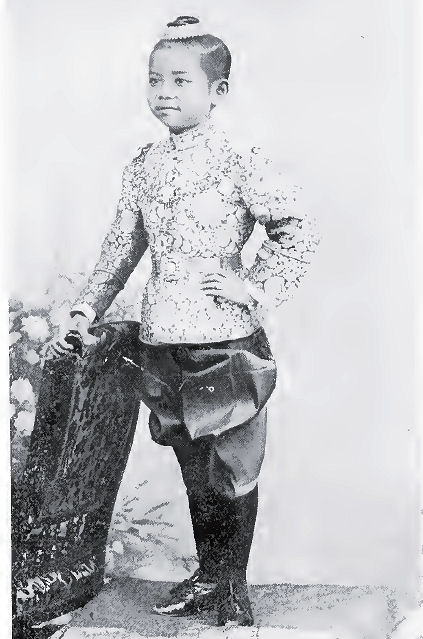
Abb.: Der zukünftige Rama VII. als Prinz
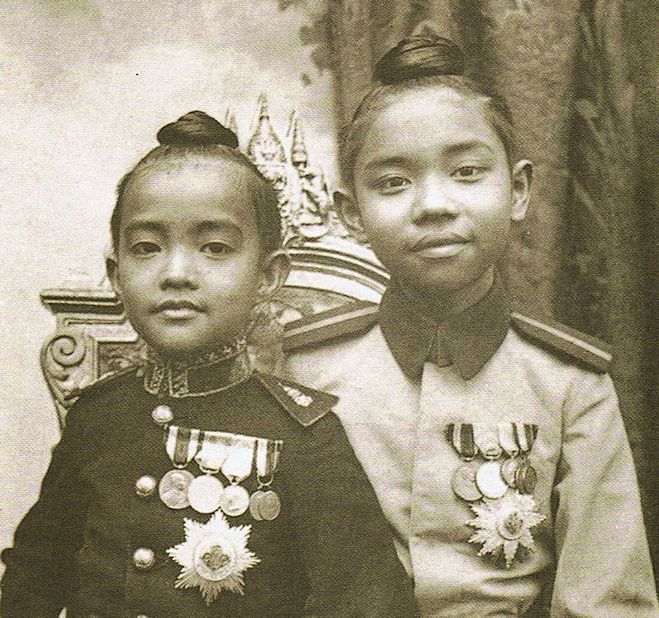
Abb.: Der zukünftige Rama VII. (rechts) als Prinz, mit Bruder, 1900
[Bildquelle: Wikimedia. -- Public domain]
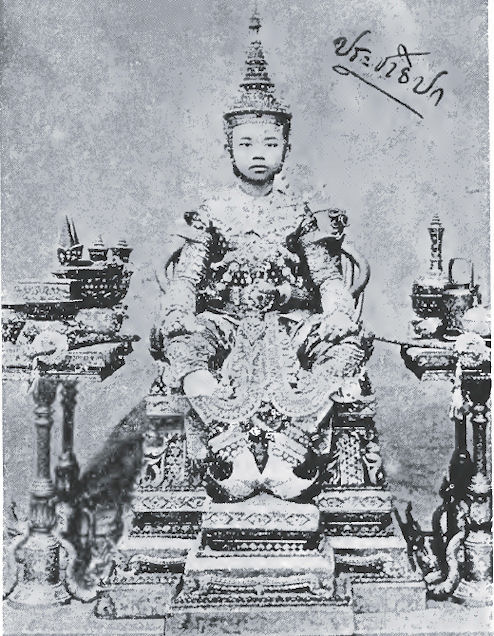
Abb.: Der zukünftige Rama VII. als Prinz, vorbereitet zur
Haarschneidezeremonie
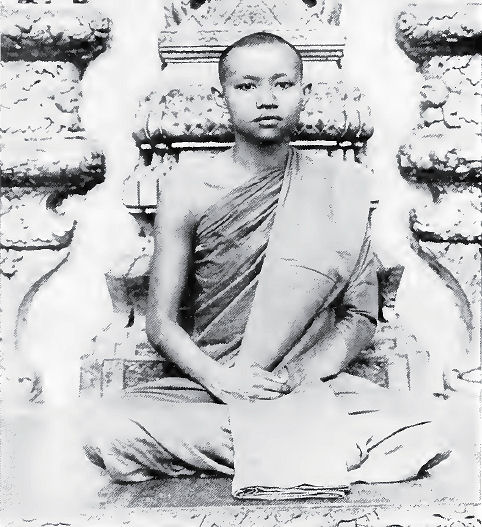
Abb.: Der zukünftige Rama VII. als Mönch in Wat Bowonnivet (วัดบวรนิเวศวิหารราชวรวิหาร),
1918
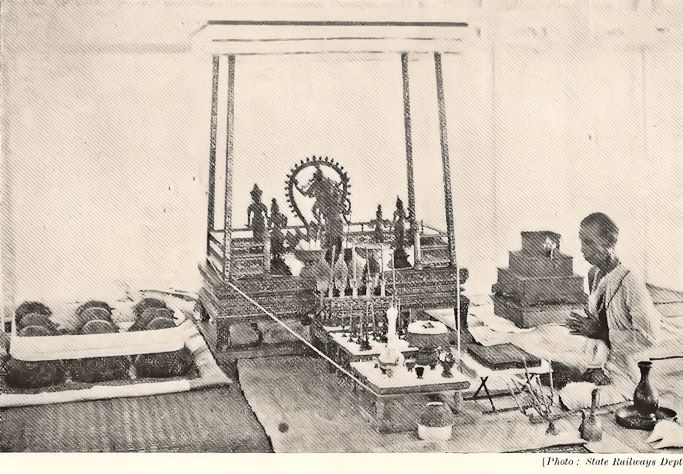
Abb.: Homa-Opfer (होम) des
(hinduistischen) Hofbrahmanen drei Tage vor der Krönung
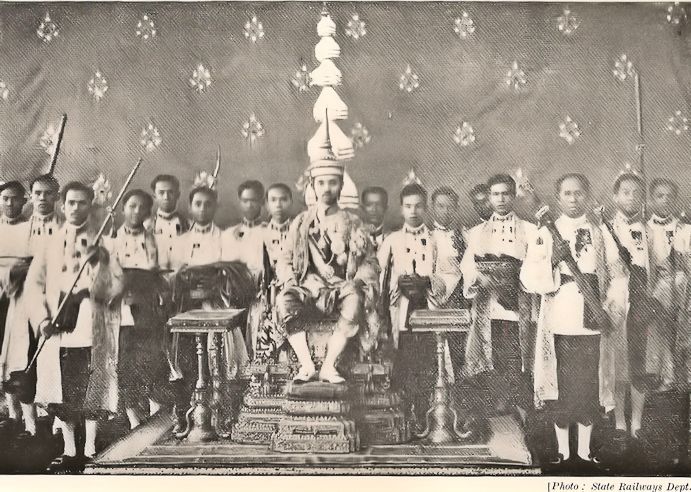
Abb.: Rama VII. mit den Trägern der königlichen Insignien
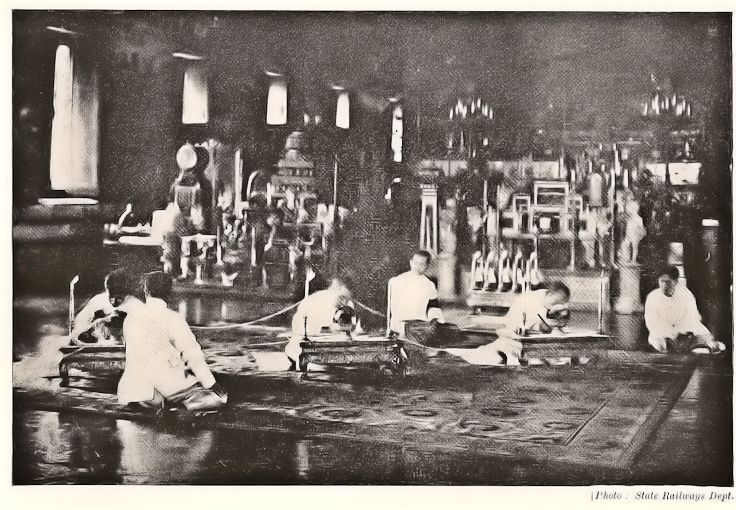
Abb.: Niederschrift der Titel: พระบาทสมเด็จพระปรมินทรมหาประชาธิปก
พระปกเกล้าเจ้าอยู่หัว, und des Horoskops des Königs auf Goldtafeln
Abb.: Rama VII. mit Gattin
Abb.: Rama VII. und Königin Rambhai Barni, Postkarte, ca. 1929
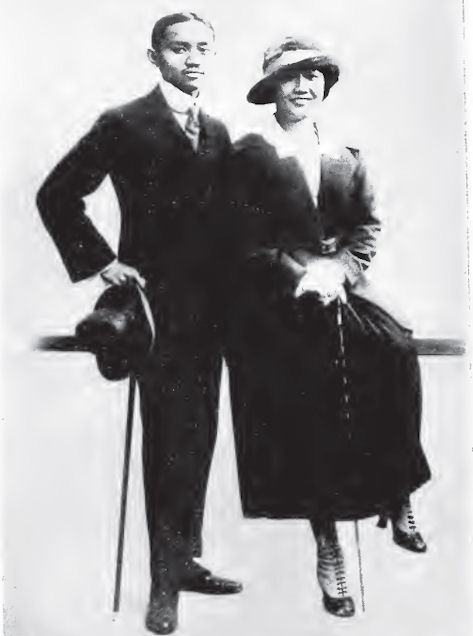
Abb.: Rama VII. mit Gattin in Europa
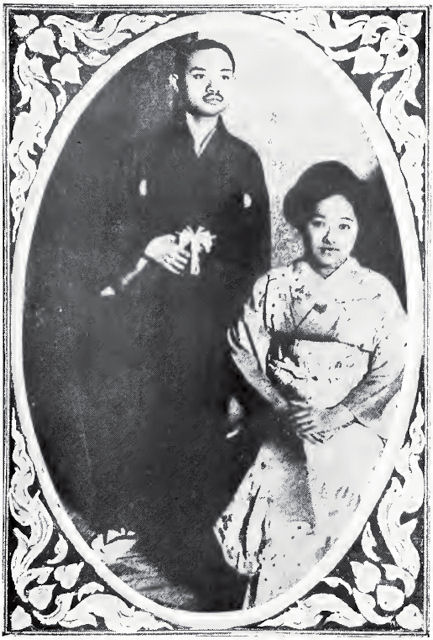
Abb.: Rama VIi. mit Gattin in Japan
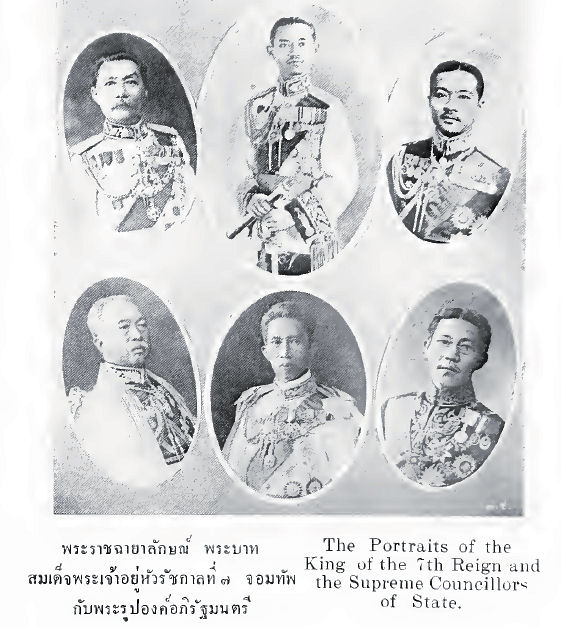
Abb.: Rama VII. und seine Berater
Rama VI. beginnt sofort, das verheerende Erbe von Rama V. aufzuräumen, indem er
die Lumphini Park Exhibition streicht
die Favoriten Ramas V. aus dem Palast jagt
die meisten Protegeés Rams V. aus dem Amt jagt
das Wild Tiger Scout Corps (จัดตั้งกองเสือป่า) auflöst
Regierungsposten wieder mit Angehörigen der Königsfamilie besetzt
eine strikte Sparpolitik beginnt
bis 1932 3000 (7%) der 45.000 Beamtenstellen streicht.
"König Prajadhipok (Rama VII., Krönungsname: Phra Bat Somdet Phra Pokklao Chaoyuhua – Thai: พระบาทสมเด็จพระปกเกล้าเจ้าอยู่หัว ; * 8. November 1893 in Bangkok, Thailand; † 30. Mai 1941 in England) war von 1925 bis zu seiner Abdankung 1935 König von Siam (1934 umbenannt in Thailand). Somdej Chao Fah Prajadhipok Sakdidej (Thai: สมเด็จเจ้าฟ้าประชาธิปกศักดิเดชน์, Aussprache: [sǒmdèt ʨâːwfáː pràʨʰaː típòk sàkdìdèt], also Prinz Prajadhipok Sakdidej) wurde am 8. November 1893 als der jüngste Sohn von König Chulalongkorn (Rama V.) und Königin Saovabha geboren. Als Bruder des Königs Vajiravudh (Rama VI.) war er eigentlich der zweite in der Thronreihe. Da der eigentliche Thronerbe, Prinz Asdang Dechavudh (เจ้าฟ้าอัษฎางค์เดชาวุธ), im Februar 1925 gestorben war, kam er etwas unvorbereitet zur Regentschaft. Die Krönung fand am 26. November 1925 statt. Wenige Jahre später wurde auch Siam von den Auswirkungen der Weltwirtschaftskrise getroffen. Die in Europa ausgebildeten Eliten fanden keine angemessene Arbeit, auch der Hof musste sparen und Arbeitskräfte entlassen. Insgesamt stieg die Unzufriedenheit so sehr, dass im Sommer 1932 eine Revolution die Absolute Monarchie abschaffte. Der König hatte die Wahl, entweder in eine Konstitutionelle Monarchie einzuwilligen oder sofort abzudanken. Da er bereits über die Einführung einer Verfassung nachgedacht hatte, wählte Rama VII. den Verbleib auf dem Thron. Die Verfassung wurde am 10. Dezember 1932 verkündet.
Zum 150. Jahrestag der Chakri-Dynastie im April 1932 wurde die Phra Phuttha Yodfa-Brücke über den Maenam Chao Phraya eingeweiht, die Bangkok und Thonburi miteinander verbindet.
Am 2. März 1935 dankte der König letztlich doch ab, weil die neue Regierung sich in seinen Augen nicht gemäß demokratischer Grundsätze verhielt und er keine Chance sah, die weitere Entwicklung zu beeinflussen. Er ließ sich wegen gesundheitlicher Probleme in England behandeln, wo er am 30. Mai 1941 während des Zweiten Weltkrieges starb.
Sein Nachfolger wurde der erst neun Jahre alte, in Heidelberg geborene Prinz Ananda Mahidol (Mom Chao Ananda Mahidol Mahidol — หม่อมเจ้า อานันทมหิดล มหิดล)."
[Quelle: http://de.wikipedia.org/wiki/Rama_VII. -- Zugriff am 2011-10-06]

Königin: Rambhai Barni (รำไพพรรณี, 1904 - 1984).
Abb.: Königin Rambhai Barni (รำไพพรรณี)
[Bildquelle: th.Wikipedia. -- Public domain]
"Queen Rambhai Barni of Siam (Thai: รำไพพรรณี ;RTGS: Ramphaiphanni), formerly Her Serene Highness Princess Rambhai Barni Svastivatana (Thai: รำไพพรรณี สวัสดิวัตน์ ;RTGS: Ramphaiphanni Sawatdiwat; born 20 December 1904 – 22 May 1984), was the wife and Queen Consort of King Prajadhipok of Siam. Early life
Her Serene Highness Princess Rambhai Barni Svastivatana was born on 20 December 1904, to Prince Svasti Sobhana the Prince of Svastivatana Visishta (สวัสดิโสภณ กรมพระสวัสดิวัดนวิศิษฎ์, 1865 - 1935, a son of HM King Mongkut and Princess Piyamawadi) and Princess Abha Barni Gaganang (อาภาพรรณี คัคณางค์, 1874 - 1938). She was given the nickname by courtiers as Thanying Na or Princess Na (Thai: ท่านหญิงนา). At the age of 2 she entered the Palace, as with tradition to be 'given' to a Queen for education; in Princess Rambhai Barni's case it was HM Queen Saovabha (เสาวภา), wife of HM King Chulalongkorn (her aunt), from then on she lived at Dusit Palace (พระราชวังดุสิต).
After the death of King Chulalongkorn in 1910, She was moved to the Grand Palace (พระบรมมหาราชวัง), where she studied at the Rajini School (โรงเรียนราชินี, or Queen's School) set up by Queen Saovabha. During this period she became very close with her cousin and Queen Saovabha's youngest son HRH Prince Prajadhipok Sakdidej, the Prince of Sukhothai. In 1917, after completing his studies abroad and his tradition monkhood, Prince Prajadhipok and Princess Rambhai Barni were married at Bang Pa-In Palace (พระราชวังบางปะอิน), under the blessings of her new brother-in-law; HM King Vajiravudh. The couple lived at the Prince's Bangkok residence the Sukhothai Palace.
QueenIn 1925, King Vajiravudh died without leaving any issue, the crown was then passed on to his younger brother and heir. Princess Rambhai Barni's husband ascended the throne as King Prajadhipok (or Rama VII), she was immediately given the appropriate title of Queen Consort of Siam. Prajadhipok followed his brother's abandonment of polygamy and instead had one Queen. Both the King and the Queen received modern (and therefore European) educations in their youths, once they inherited the throne they set about modernizing the institution of monarchy copying European dress and customs.
The King and Queen preferred to spend most of their time away from Bangkok, preferring instead to stay at the summer beach resort town of Hua Hin (หัวหิน) in Prachuap Khiri Khan province(ประจวบคีรีขันธ์) at a Summer Palace, which was called “Klai Kangwon” (Thai: วังไกลกังวล) (or “Far from Worries”), which they had built. It was here in June 1932 that the Royal couple was told of the Revolution instigated by the Khana Ratsadon (การปฏิวัติสยาม พ.ศ. 2475 ), which demanded of the absolutist King a constitution for the people of Siam. The event would be a turning point for Rambhai Barni and her husband as the absolute rule of the House of Chakri was replaced by a constitutional regime.
In 1933, the Royal couple left Siam, for Europe where the King was due to have an eye operation in England. Despite the long distance the King continued to fight with his government back in Bangkok, through letters and telegrams. The fight came to a head when the government refused to accept Prajadhipok's ancient power of pardon. The King first threatened, but when he was ignored decided to on 2 March 1935 to abdicate his throne, he was succeeded by his nephew Ananda Mahidol. The Royal Couple settled in Surrey, first at Knowle House then at Glen Pammant.
Life in ExileThe couple moved again to Vane Court, the oldest house in the village of Biddenden in Kent. They led a peaceful life there, gardening in the morning and the King writing his autobiography in the afternoon. In 1938 the royal couple would moved again to Compton House, in the village of Wentworth in Virginia Water, Surrey. The couple had no children, but adopted the infant son of one of Prajadhipok's deceased brothers. (The stepson, Prince Jirasakdi, would later serve as a RAF fighter pilot during the Battle of Britain. He died on duty in 1942.)
Due to active bombing by the German Luftwaffe in 1940, the couple again moved, first to a small house in Devon, and then to Lake Vyrnwy Hotel in Powys, Wales, where the former King suffered a heart attack. King Prajadhipok eventually died from heart failure on 30 May 1941.
Leader of the ResistanceAfter the King's death, the Queen became more involved in politics. In December 1941 the Japanese Empire invaded and occupied Thailand, the Japanese government forced the Thai government to declare war on both Great Britain and the United States of America. The Free Thai Movement (การปฏิวัติสยาม พ.ศ. 2475) set up partially by Thai exiles living abroad; the movement included many diplomats, students and members of the Royal Family.
The Queen and her brother, HSH Prince Subhasvastiwongse Snith Svastivatana, made clear their Free Thai sympathies and used their connections to assist like-minded students in organising a resistance movement in Britain. She was among the four women who volunteered for non-military tasks with the Free Thai. Despite not being an official member, the Queen assisted the movement through fund raising and lobbying influential Ministers.
Return and deathIn 1949, the Queen was invited to return to Thailand, bringing with her the King's ashes. After her return she continued to carry out many official duties on behalf of the new King Bhumibol Adulyadej. She spend the rest of her life at the Sukhothai Palace. Dying in 1984 at the age of 79. She was cremated in a Grand Royal Funeral presided over by her nephew the King at Sanam Luang in front of the Grand Palace."
[Quelle: http://en.wikipedia.org/wiki/Rambhai_Barni. -- Zugriff am 2012-03-30]
????
Schreiben König Prajadhipoks an Francis Bowes Sayre (1885 - 1972):
"‘The birth of the free press aggravated matters still more. The position of the king has become one of great difficulty. The movements of opinion in this country give a sure sign that the days of Autocratic Rulership [sic] are numbered. The position of the king must be made more secure if this dynasty is going to last. Some sort of guarantee must be made against an unwise king." "As you well know, the king has absolute power in everything. This principle is very good and very suitable for the country, as long as we have a good king. If the king is really an "elected king", it is probable that he would be a fairly good king. But this idea of election is really a theoretical one ..." [Quelle: King Bhumibol Adulyadej : a life's work. Thailand's monarchy in perspective / ed. by Nicholas Grossman ; Dominic Faulder [u. a.]. -- Singapore : Didier Millet, 2011. -- 383 S. : Ill. ; 29 cm. -- ISBN 978-981-4260-56-5.. -- S. 38]
1925-11 - 1932
Es erscheinen neu (mit teilweise nur kurzer Lebenszeit):
- 35 Tageszeitungen
- 136 andere Periodika
1925-11-18

Der König schafft das Supreme Council of State of Siam (อภิรัฐมนตรีสภา)
"The Supreme Council of State of Siam (Thai: อภิรัฐมนตรีสภา) was an advisory and legislative council established by His Majesty King Prajadhipok of Siam (Rama VII) that existed from 1925 to 1932. The Eton and Sandhurst educated monarch wished to create a council similar to a cabinet, where the most important government officials could meet to decide on state affairs. The Council was founded on 28 November 1925. Members
The Council was composed of 5 members, each a prince of the Chakri Dynasty who had held ministerial positions during the reigns of King Rama V and Rama VI (Prajadhipok’s father and older brother). The Councillors were:
Prince Bhanurangsi Savangwongse, The Prince Banubandhu Vongsevoradej (สมเด็จพระเจ้าบรมวงศ์เธอ เจ้าฟ้าภาณุรังษีสว่างวงศ์ กรมพระยาภาณุพันธุวงศ์วรเดช, 1859 - 1928)
- Prince Paripatra Sukhumbhand, Prince of Nakorn Sawan (สมเด็จพระเจ้าบรมวงศ์เธอ เจ้าฟ้าบริพัตรสุขุมพันธุ์ กรมพระนครสวรรค์วรพินิต, 1881 - 1944)
- Prince Narisara Nuvadtivongs (มเด็จพระเจ้าบรมวงศ์เธอ เจ้าฟ้ากรมพระยานริศรานุวัดติวงศ์, born as "พระเจ้าลูกยาเธอ พระองค์เจ้าจิตรเจริญ", 1863 - 1947)
- Prince Damrong Rajanubhab (สมเด็จพระเจ้าบรมวงศ์เธอ พระองค์เจ้าดิศวรกุมาร กรมพระยาดำรงราชานุภาพ. 1862 - 1943)
- Prince Kitiyakara Voralaksana Prince of Chanthaburi (พระเจ้าบรมวงศ์เธอ พระองค์เจ้ากิติยากรวรลักษณ์ กรมพระจันทบุรีนฤนาถ, 1874 - 1931)
The Council was not the only organ of government at the time. The King also had a Privy Council (Thai: อสภากรรมการองคมนตรี) and a Council of Secretaries (Thai: เสนาบดีสภา). However, the Supreme Council was regarded as the most important. Prince Paripatra was the most dominant member of the Council of State, since he was then heir to the throne and Minister of the Interior.
HistoryDuring its existence the council took many initiatives. For example, in 1929 the Council decided to cut public spending on the government including civil servant’s pay and defence spending, an action which was one of the main justifications the Khana Ratsadon (คณะราษฎร, the People's Party) gave for the Revolution of 1932.
The Council filled many civil service and military positions with their own relatives, replacing many commoners appointed under King Vajiravudh (Rama VI), which also created discontent in the country. The Council increased taxes on the populace to try to stem the economic downturn the country faced after the British Empire, Siam’s largest trading partner, abandoned the gold standard.
The most important action by the Council was the rejection of King Prajadhipok’s draft Constitution for the Kingdom of Siam in early 1932, on the 150th anniversary of the House of Chakri and the foundation of Bangkok. The constitution would have given the people their first parliament, with a popularly elected lower house and an expanded Supreme Council as an upper house. A few months later the Khana Ratsadon staged a coup which ended the absolutist monarchy and replaced it with a constitutional monarchy. The constitution in which they promulgated abrogated the many powers of the monarch and dissolved the Supreme Council; it exiled the influential Prince Paripatra Sukhumband for life."
[Quelle: http://en.wikipedia.org/wiki/Supreme_Council_of_State_of_Siam. -- Zugriff am 2012-06-13]
1925-12
Bis Ende 1926 hat Siam folgende Summen für die Entwicklung des Landes ausgegeben:
Eisenbahnbau 172, 4 Mio. Baht Bewässerungsbau 22,7 Mio. Baht Bangkoker Wasserwerke 4,9 Mio. Baht Samsen Elektrizitätswerk 2,1 Mio. Baht Total 202 Mio. Baht Diese Entwicklungsprojekte wurden folgendermaßen finanziert:
Laufende Einnahmen 28,1 Mio. Baht Anleihen und Reserven 174 Mio. Baht
1925-12-09
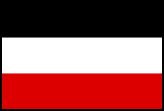
Eröffnung eines Generalkonsulats Siams in Berlin.
1925-12-10

Eröffnung eines Generalkonsulats Siams in Hannover. Das Konsulat wird 1930-09-30 aus finanziellen Gründen geschlossen.
1925-12-29
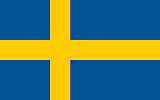
Unterzeichnung des Treaty of Friendship, Commerce and Navigation with Sweden, B.E. 2468 (1925 A.D.). Ratifizierung 1925-10-25, gültig bis 1936-10-25
1926-01 - 1935

Raymond Bartlett Stevens (1874 - 1942) ist US außenpolitischer Berater Siams.
Abb.: Raymond Bartlett Stevens, 1919
[Bildquelel: LoC / Wikimedia. -- Public domain]
"Raymond Bartlett Stevens (June 18, 1874 - May 18, 1942) was a U.S. Representative from New Hampshire. Born in Binghamton, New York, Stevens moved with his parents to Lisbon, New Hampshire, in 1876. He attended the public schools, Boston Latin School, Harvard University, and Harvard Law School. He was admitted to the bar in 1899 and commenced practice in Lisbon. He served as member of the New Hampshire House of Representatives in 1909, 1911, 1913, and 1923. He served as member of the State constitutional convention in 1912.
Stevens was elected as a Democrat to the Sixty-third Congress (March 4, 1913-March 3, 1915). He was not a candidate for renomination in 1914, but was instead an unsuccessful candidate for the United States Senate. He served as special counsel of the Federal Trade Commission, 1915–1917, and was United States representative to the Allied Maritime Transport Council in 1917 and 1918. He served as vice chairman of the United States Shipping Board, 1917-1920.
Stevens served as delegate to the Democratic National Conventions in 1920 and 1924. He was appointed adviser in foreign affairs to the King of Siam in January 1926, in which capacity he served until 1935, except for a six-month period during 1933 when he was a member of the Federal Trade Commission. He was a member of the Federal Tariff Commission, 1935–1942, serving as chairman, 1937-1942. He died in Indianapolis, Indiana, May 18, 1942, and was interred on the grounds of the family residence at Landaff, New Hampshire."
[Quelle: http://en.wikipedia.org/wiki/Raymond_Bartlett_Stevens. -- Zugriff am 2014-11-16]
1926-01-01
Eröffnung der ersten Eisenbahnbrücke über den Chao Phraya (แม่น้ำเจ้าพระยา): Rama VI. Brücke (สะพานพระราม 6), zwischen Bang Sue (บางซื่อ) und Bang Phlat (บางพลัด), Bangkok
Abb.: Lage der Rama VI. Bridge (สะพานพระราม 6)
[Bildquelle: OpenStreetMap. -- Creative Commons Lizenz (Namensnennung, share alike)]
Abb.: Rama VI. Brücke (สะพานพระราม 6), Bang Sue (บางซื่อ), Bangkok, Postkarte, 1926/1930
"Die Rama-VI.-Brücke (Thai สะพานพระราม 6) ist eine Eisenbahnbrücke in Bangkok, die über den Fluss Chao Phraya (แม่น้ำเจ้าพระยา) führt und die beiden Bezirke Bang Sue (บางซื่อ) und Bang Phlat (บางพลัด) miteinander verbindet. Die Rama-VI.-Brücke war die erste Brücke über den Chao Phraya und wurde erstmals 1922 während der Regierung von König Vajiravudh (Rama VI.) errichtet und am 1. Januar 1926 eingeweiht, ehe sie im Zweiten Weltkrieg zerstört wurde. Ziel war es, die Hauptstadt Bangkok mit den Provinzen in Süd-Thailand per Eisenbahn zu verbinden. Sie wurde zwischen 1950 und 1953 wieder aufgebaut und am 12. Dezember 1953 wieder eröffnet.
Die Brücke weist zwei Schienenwege und einen Fußgängerübergang auf. Sie hat fünf Spannen mit 77,26 Meter, 83,46 Meter, 120,00 Meter, 83,46 Meter und 77,26 Meter Spannweite. Mit insgesamt 441 Meter Länge ist sie die größte Eisenbahnbrücke in Thailand."
[Quelle: http://de.wikipedia.org/wiki/Rama-VI.-Br%C3%BCcke. -- Zugriff am 2011-10-10]
1926-01-01 - 1926-01-19
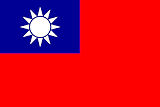
Kanton (廣州市, China): Zweiter Nationalkongress der Kuomintang (中國國民黨第二次全國代表大会). Die Chinesen Siams senden Delegierte.
1926-01-08 -1945-08-25
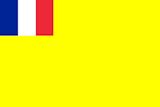
Bảo Đại (1913 – 1997) ist Kaiser des französischen Protektorats Annam (Vietnam).
Abb.: Inthronisation von Bảo Đại nach seiner Rückkehr aus Frankreich. -- In: L'Illustré <Paris, Frankreich>. -- No 2178. -- 1932-09-18. -- Titelblatt
Abb.: Lage von Annam
[Bildquelle: Bearsmalaysia / Wikipedia. -- Creative Commons Lizenz (Namensnennung, share alike)]
1926-01-27
Zeitung Pakka Thai [ปากกาไทย]: Inserat für ein Mittel gegen Geschlechtskrankheiten:
"A husband who goes out and mixes with other women secretly murders his wife without leaving any evidence admissible in a court of law. Whenever a man comes to visit the city he seeks leisure and relaxation at a house of easy virtue and when he returns home the murder takes place. However, you can’t blame him because he went and fraternized with prostitutes and brought the disease home to his wife without knowing it." [Übersetzung: Barmé, Scot: Woman, man, Bangkok : love, sex, and popular culture in Thailand. -- Lanham : Rowman & Littlefield, 2002. -- 273 S. : Ill. ; 24 cm. -- ISBN 0-7425-0157-4. -- S. 178, Anm. 62]]
1926-01-29

Der britische Gesandte Robert Hyde Greg (1876-1953) an das Foreign Office:
"The note struck by King Prajadhipok is economy, simplicity and accessibility. His intention is to return as far as possible to the golden age of his father, King Chulalongkom. Although he appears to have been fond of his late Brother, everything he says and does is in fact the exact opposite of what King Rama [Vajiravudh] said and did." [Zitiert in: Batson, Benjamin Arthur <1942 - >: The end of the absolute monarchy in Siam. -- Singapore : Oxford Univ. Pr., 1984. -- 349 S. : Ill. ; 22 cm. -- (Southeast Asia publications series ; no. 10). -- ISBN 0-19-582612-4. -- S. 36]
"Up to the present the new King may best be described as the crowned Chairman of a select committee of five Princes. The latter are the most intelligent and honest administrative group in the country .... The combination of the King and the leading Princes ought therefore to work well for the time being, though it may tend to hamper decisive and swift action and is safe rather than progressive." [Zitiert in: Batson, Benjamin Arthur <1942 - >: The end of the absolute monarchy in Siam. -- Singapore : Oxford Univ. Pr., 1984. -- 349 S. : Ill. ; 22 cm. -- (Southeast Asia publications series ; no. 10). -- ISBN 0-19-582612-4. -- S. 131]
1926-02-18
Karikatur über Väter, die ihre Töchter verschenken, in der Zeitschrift Katun (การ์ตูน):
Abb.: "Herr, das ist mein Geschenk an Sie!"
[Bildquelle: Barmé (2002)]
1926-02-21 - 1926-03-03

Königsweihe von Rama VII.:
"The Water for the King's Bath of Purification were Consecrated at the Sacred Shrines in Seventeen Circles.
February, 4th., the seventeen Circles, each Circles headed by the Lord abbot of the place with the priests and Lord Lieutenant and the officers of the Ranks were assembled. The victorious Candle was lit and the priests were preaching Bharnvar sermon during the time of the rite.
February 5th., the priests were presented the food, then the Lord abbot distinguished the victorious Candle and tended the sacred water mixed with the water for the King's anointment. When it was finished, the water handed to the Head officer there for celebration, after it had been done, the water will be conveyed to Bangkok by the officers and awaiting for the arrival time of the ceremony.
The Procession Carrying The Gold Tablet.
February, 21st., the pageant was prepared in front of Salasahathai Smagom. The Alaksh officer, removing the vessel which bearing the gold tablet out from the temple of Wat Prakao through the western gate of the gallery and placed upon a palanquin and the vessel was borne by alaksh officer surrounded by the royal paraphernalia, herald trumpets, drums and supporters in full dresses. When the procession arrived at Devesraksha gate, the vessel bearing the gold tablet was removed down from the palanquin into Amarindr Hall and going further in to Baisal Thaksin Hall to be placed on the altar (Pratan Monthol) there.
The Rite Tangnamwongdai.
February, 21st., the King seated on a state palanquin, proceeded in procession from the stepping of Borompiman Hall to Devesraksha gate. Upon arriving there, His Majesty went into Amarindr Hall and making a royal profession of the faith to Pra Sambudbarni Buddha and Pra Budnjaniratnapatimakorn Buddha, after he had done this, the King seated himself in Baisal Thaksin Hall. The Prince Patriach was preaching and the High Priests took part in the Benediction Services. The Brahmins priests presented the water in the conch shells to His Majesty to begin the anointment ceremony, when these were done, the King returned in the same manner.
The Ceremonial Day.
February, 22nd., before due time, the King proceeded in procession the same as yesterday to Amarindr Hall, where the High Priests were assembled and headed by Prince Kromluang Jinavor, the Prince Patriach. The King made a royal profession of the Faith, and when due time, His Majesty lit up the candle of the Faith and passed a candle stick to the Prince Patriach to whom he lit up the Candle of victory. The Priests took Part in the Benediction Services, and a fanfare of signals, herald trumpets, drums, Siamese music etc. was made. After this part was finished, the Royal pages presented the royal offerings to His Majesty to tend them on his part and sent them to be offered at seventeen places, especially the Nine Tiers Umbrella of State and some Deities places. The King presented the priesthood robes and the knapsacks to the priests, then His Majesty returned to Baisal Thaksin Hall. The officers attended the priests to be catered food in Baisal Thaksin and Amarindr Hall, meanwhile the King was making a profession of the Faith, then the Prince Patriach was preaching, and the priests took part in the Benediction Services. The King then presented food to the priests, and after the priests had been catered and making a returning Service, His Majesty proceeded to Amarindr Hall and making a royal profession to the Faith at the Priests Stand. The Priests were preaching Bharnvar in turn during the rite until the candle of victory was distinguished and the King returned in the same manner.
In the evening, the King proceeded in procession to Amarindr Hall where His Majesty received homage of the officials of state, after he had made a profession of the Faith to Pra Sambudbharni Buddha, and Prabud Maniratnapatimakorn Buddha, the King lit up a candle stick and passed to Prince Vividh to be worshipped to the sacred Emeral Buddha. The King then proceeded into Baisal Thaksin Hall and lit up the candle on the altar where His Majesty attended to the Buddhism service which was preached by the Lord Bishop Pra Sasnasobhon, altogether with his oration. The Brahmin priests offered three kinds of Leaves as a symbol of purification from evil things to the King to brush himself, when His Majesty had done this, returned them to the Brahmin priests to tend them to the sacrificial fires. The ceremony began from today, and the priests assembled in Baisal Thaksin Hall and in Amarindr Hall took part in the Benediction Services. Rajpandits were making the offerings at the Octagonal Throne and Horas offered same to nine deities. The King lit up the candle for worshiping to Pra Siamdevadhiraj, then His Majesty went up to Mahamonthial Hall, making his profession of the Faith, wearing Pra Mahamongol and His Majesty attended to the Benediction Services held by the priests on the stand. Then the King proceeded to Baisal Thaksin Hall and the priests made a returning sermon. The King seated himself in Amarindr Hall, receiving homage of officials of state, then His Majesty returned in the same manner.
February, 23rd., the King proceeded in Procession from Borompiman Hall to Amarindr Hall where His Majesty made a profession of the Faith to Pra Sambud Barni and Prabud Maniratnapatimakorn Buddhas, then he proceeded to Baisal Thaksin Hall, paying a homage worship and catering food to the priests. After the priests had been catered and making a returning sermon, the King came out to Amarindr Hall and returning in the same manner.
In the evening, the King came in procession to Amarindr Hall to make a profession of the Faith to the Buddhas in the same manner as in the previous days and, sending a candle stick to light up the candle in the temple of Wat Prakao. Then His Majesty went into Baisal Thaksin Hall to make a profession of the Faith of Buddism and attending the service, and Lord Abbot Pra Sasnasobhon was making an oration of the ceremony, while the priests in Baisal Thaksin Hall and in Amarindr Hall took place in the Benediction Services. The Brahmin Priests presented to His Majesty the water in the conch shell and the leaves (Bai Smid) as a symbolic of purification to brush himself, Rajpandits and Horas (Seers) tended the services as in the previous days. The King then proceeded to Pra Maha Monthial Hall, His Majesty attended the services in the same manners, the priests took leave, and His Majesty returned in the same manner.
February, 24th., the King proceeded in procession to Amarindr Hall and Baisal Thaksin Hall to attend his royal service the same manner as in the previous days.
In the evening, His Majesty came in Procession to Amarindr Hall and make a procession of the Faith to the Buddha and passing a candle stick, then he entered in Baisal Thaksin Hall to do service, the Lord Abbot Pra Sasnasobhon was making an oration. The Brahmin priests Rajpandits and Horas ( Seers ) attended the services in the same manners as in the two previous days. After the services, the King seated himself in Baisal Thaksin Hall, the priests took leave. The King came out to Amarindr Hall and returned in the same manner.
The Ceremony for the King's Bath of Purification.
February, 25th., prior to due time, the King proceeded in procession from Borompiman Hall to the stepping platform at Devesraksha gate. His Majesty went into Amarindr Hall, after making a profession of the Faith, he proceeded further into Baisal Thaksin Hall and did the same service at the altar ( Pratan Monthol ), while the Prince Patriach was giving the Sila Commandments. After attending the service, the King proceeded to Hoh Pra Suralaipiman, and His Majesty garbed in the white robes. When the time was due, the Brahmin priests, Pra Rajgru Vamdebmuni invited His Majesty to proceed to the royal bathing stand ( Pra Mondhop Pra Kayasnan ), escorted by the royal party, Rajpandits bearing Prachal Navaloha, the Brahmin priests bearing the image of Pra Ganesuar and the signal was made. From Hoh Pra Suralaipiman, His Majesty arrived at the bathing stand and seated himself on the Fig Wood Throne, turning his face to the North-East side as a symbol of victory. The signal was made by Phya Hora, the Brahmins, blowing the conch shells and the officers on duties was making the stanzas of Bandohs. Phya Udhaidham, the high officer of Bhasamala presented the water of anointment consisting of the Water from the five great rivers of the Kingdom, the Water of the four ponds for the usage of the ceremony and the Water consecrated from the eighteen various sacred Shrines to the King's Bath, while the priests assembled in Chakrabatbiman Hall and in Amarindr Hall held the Benediction Services and a fanfare of herald trumpets, bugles, drums and Siamese musics was made, altogether with the Military Band and the cannons were fired nineteen shots of the victories according to the rite, on this occasion the officers lifted up the nine tiers Umbrellas of State, one in Amarindr Hall, two hanging in Charakrabatbiman Hall, one in Dusit Hall, one in Chakri Hall, and another one in Ananta Hall, altogether six, then H. M. Queen Swangvatna, arranging the Royal Bed for His Majesty.
After His Majesty's Bath of Purification, the Princes of the Royal Blood offered the Water of Blessings to him as followings : —
- H. R. H. Prince Krom Luang Jinavor, the Prince Patriach and the Lord Archbishop of the Kingdom offered the sacred Water from the urn (Pra Krob Prakring ).
- H. R. H. Prince Somdetch Chowfa Krom Phya Bhanubanduwongsevoradej offered the blessing Water from the urn ( Pratao Benchkannoi ).
- H. R. H. Prince Somdetch Chowfa Krom Pra Nagorsvarga Vorabinit offered the blessing Water from the urn ( Pratao Buayok Keo ),
and the Bhusamala officers offered to His Majesty the Water from various urns, Phya Horadhibti offered the Water from Pratao Navakroh urn, the Brahmin priests of Siva offered the conch-shells ( Pra Mahasangkh Ha and Pra Mahasangkh Sam), the Brahmin priests of Vishnu offered the conch shell ( Pra Mahasangkh Samrut ) and Phya Udaidham offered the conch shell ( Pra Mahasangkh Thaksinavat) to His Majesty, after the anointment, the Kinggarbed in another robes and proceeded on to Hoh Pra Suralaibiman.
The Coronation Day.
When the time was due at 10.52 A.M., the King proceeded from Hoh Pra Suralaipiman to seat himself on the Fig Wood Octagonal Throne beneath the nine tiered Umbrella of State, turning his face to the East, Phya Udaidham presented the water urn (Pratao Benchkan) to His Majesty to receive the anointment water offered by Rajpandits and Brahmin priests, Rajpandits then addressed the Blessings in Pali verse to His Majesty and he answered in Pali verse. The Brahmins priests then offered the anointment water from the conch shells and from the urns to His Majesty turning round to every side from Right to Left until finally completed at the North-East side. The King then turning his face to the East, meanwhile Prince Vividh addressed the Blessings to His Majesty, altogether being ten sides. When this part was finished, the King rose from the Octagonal Throne and proceeded with his royal party to Bhatrabit Throne where the Brahmin priest, Pra Rajgru Vamdebmuni pronounced three times the Krailas Hymn addressed in Pali verse offering to His Majesty the State Title and His Royal Full name appeared on the gold tablet, altogether with the royal regalia, the King received them and answered in Pali verse—while a fanfare of blowing conch shells, the signal instruments, herald trumpets, drums, Siamese musics and the Military band was made, the cannons of Victory were fired nineteen shots, while the Army and Navy cannons were fired one hundred and one salutes each for the King's Honour. All priests of every monastery held the Benediction Services and striking the bells for seven rounds, being the signals to the public that the King had been fully crowned now.
After the King had given his expression in Pali verse to Pra Rajgru Vamdebmuni, the High Brahmin priest, being the answer of his address. Pra Rajgru Vamdebmuni then offered to His Majesty the golden tablet bearing the King's State Title and His Royal Full Name, the royal regalia and the royal weapons as following :
- The Gold Tablet (he received, then returned it to the bearer to the former place)
- The Brahmin Girdle String.
- The Girdle of the Nine Gems.
- The Girdle of Brilliants.
- The Royal State Crown (he received these four things and wore them).
- The Sword of Victory,
- The Sceptre.
- The Fan Valvijni.
- The Yak's Tail Whisk.
- The White Elephant's Tail Whisk (he received these five things and put aside near his right and left).
- The Diamond Ring.
- The Ring Ratnavaravudh (he received these two rings and put on his fingers).
- The Slippers (he was put on by Pra Rajgru Vamdebmuni).
- The Personal Sword.
- The Stick with deity Head (he received these two things and returned them to the bearers to the former place).
- The Receptacle.
- The Betelnut Set (the bearers put those two upon things the stand at the Right side of Bhatrapit Throne.
- Pra Mondhob.
- The Water Urn (the bearers put these two things upon the stand at the Left side of Bhatrapit Throne, meanwhile Pra Rajgru Vamdebmuni offered The Sword Prasang Asdavudh to him).
- The Spear.
- The Hostage Sword.
- The Trident.
- The Disc.
- The Sword and Shield.
- The Bow.
- The Long Handled Sword Sanpolpai.
- The Gun of Satorg (he received these things and returned them to the bearers to stand behind the Right and Left sides of Bhatrapit Throne)
The eleven kinds of the Royal Weapons and Royal Regalia in the time of the King's Coronation.
- The Whisk of the White Elephant's Tail.
- The Smooth Scabbard Sword.
- The Stick with Deity Head.
- The Bejratna Spear.
- The "Hostage Sword."
- The Trident.
- The Disc.
- The Sword and Shield.
- The Bow.
- The Long Handled Sword (Ngow) Sanpolpai.
- The Gun of The Satong.
The King Held An Audience in Amarindr Hall.
At 1 p. m. the King, in his Regal Robes, wearing the Girdle String of Brahmin, the Girdle String of nine Gems, the Girdle String of Brilliants, the Grand Robe with Chulchomklao Chain, and the Sword of victory in his hand, proceeding from Devarasmahesuar Gate to Amarindr Hall. After His Majesty already seated himself on the State Throne Pratan Budtan beneath the Royal Nine Tiered Umbrella of State, donning the Royal State Crown, the time was due and the signal had been given. The curtain had been drawn and there was a resounding of a fanfare, the Royal Elephant, Horses and State Palanquin were ready at the mounting platform and the band of the Guards of Honour was made for the Royal Blessing. The Princes of the Royal Blood, the officers of the ranks and the Diplomatic Corps were representing themselves to His Majesty. When the sound ended. H. R. H. Prince Somdetch Chowfa Krom Phya Bhanubanduwongsevoradej, in the name of the assemblage, read the address of congratulation and a vow of loyalty to the King who made the answers, the Prince then received his command. The signal had been given, the curtain drawn closed and there was a resounding of a fanfare in the same manner, The King, Receiving Homage in Baisal Thaksin Hall.
The King, took off the Royal State Crown and donned in the Mahakathin Crown with the Sword of Navaloha in his hand, proceeded into Baisal Thaksin Hall and seated himself on Bhatrapit Throne, receiving homage of the Princess of the Royal Blood and Ladies of the Court. The Seat of the Queen had been laid at the Northern Part of the Throne and the anointment of the Queen took Place. Prince Damrong, the Lord Privy Seal read out the King's proclamation raising his royal consort, Princess Rambai Barni to the rank of the Queen. The King then poured out the water from conch shell to Her Majesty and made an anointment and presented to her the royal paraphernalia of the rank,—while a fanfare was resounded. Then Princess Nabhaborpraba, in the name of the Princesses and Ladies of the ranks, read out the congratulation, and the King made a reply. Their Majesty then rose from the Throne, scattering riches on their way to Hoh Pra Suralaipiman to undress themselves and went into Borompiman Hall, the Royal Residence. The King Proceeded to Wat Pra Keo and to Dusit Hall.
Afterward, the officers prepared the religious rite in the temple of Wat Prakeo and in Dusit Hall and placing the Royal Urns of the remains of the King's predecessors as follows :
- The Late King Prabud Yodfa Chulalok,
- The Late King Prabud Lersla Nabhalai,
- The Late King Pra Nangklao Chowyoohua,
- The Late King Pra Chomklao Chowyoohua,
- The Late King Pra Chulachom Klao Chowyoo Hua,
- The Late Somdetch Pra Pathom Borommahajanok,
- The Late Queen mother of the King,
on the altar adorned with Muk beneath the Nine Tiered Umbrella of State in Dusit Hall.
At 4 p. m. the King, in his Royal Regal Robes as in the Coronation time, proceeded from Borompiman Hall to Pratinang Dusitabhiromya, taking off his Royal Hat, donning the Royal State Crown, came out to the stepping platform and seated himself on the State Canopy proceeded in procession to Wat Prasriratnasasdaram (Wat Prakeo). Upon arriving there, the King took off the Royal State Crown and, wearing a Royal Hat, proceeded on foot into the Temple. His Majesty made a profession of the Faith to Prabud Mahamaniratna Patimakorn Buddha and made an offering of gold and silver Flowers and candles, and he made a further worship to the Buddhas belonged to the Late King Prabud Yodfa Chulalok and the Late King Prabud Lersla Nabhalai. The King then lit the worshipping candles to the Emerald Buddha and the Pradharm placed upon the altar ( Dharmassila ). Meanwhile the High Priests assembled and headed by Prince Jinavor, the Prince Patriach who was giving the Sila commandments to the King, His Majesty received Sila and declared himself in the assemblage of Pra Ratnatri, the priests, the Royal Princes and the officers of the Ranks that he became the Defender of the Buddism Faith. The priests then, signifying their acceptance and the Prince Patriach pronounced another Blessing sermon to His Majesty.
The priests took leave. The King then returned to the pavillion and, wearing the Royal State Crown, seated himself in the State Canopy and proceeded in procession to Dusit Hall. Upon arriving at the stepping platform at Pratinang Abhorbimokprasat, the King then took off the Crown and proceeded on foot into Dusit Hall. The King paid homage to the remains of his Late Predecessors, accompanied by the Queen in performing the religious rite. Meanwhile the priests held in Benediction Sermons. Their Majesty then proceeded to the Inner Hall, accompanied by the noble Ladies, and scattering riches on their way along.
At 6 p.m., there was a Baisri celebration of the Royal Households. The Officers of the Ranks and the Court Ladies were assembled in Amarindr Hall, the Brahmin priests lit up the the Blessing candles and performed the rite by passing the candles round and round from one another to one another, being the symbol of blessing to Royal residence.
The Blessing of Royal Bedchamber.
In the evening, the King, accompanied by the Noble Ladies bearing the royal regalia, proceeding from Borombiman Hall and scattering riches along his way on to Chakrabatbiman Hall, the Royal Residence. When the time was due, the signal had been given and there was a resounding of fanfare. Meanwhile the King was sitting on the Royal State Bed, two senior relatives of His Majesty Queen Sawang Watna and Queen Sukhumal presented the Whisk of the White Elephant's Tail and the Betelnut Set to him respectively, and the senior Noble Lady, Tao Voraganananta presented the Golden Key to him. The King received these things and put them aside. The two Queens gave him the Royal Blessing, while the King lay down on the West part of the Royal Bed as a symbolic inference to his predecessors, then His Majesty rose and proceeded to his residence.
The King, held an Audience to the special envoys and the foreign representatives in Chakri Mahaprasat Hall.
February, 26th. the King proceeded to the Great Hall of Audience in Chakri Mahaprasat where the special envoys and representatives from the foreign countries, represented by H.H. Prince Tridos, the Minister of Foreign Affairs, submitting the address of congratulations to His Majesty. The King made a reply, then returned to the Inner Hall.
In the evening, the King proceeded to Baisal Thaksin Hall, after he had worshipped at the altar (Pratan Monthol), making his seat. The Princes of the Royal Blood and Ladies of Ranks, paying homage to His Majesty, then he proceeded further to Amarindr Hall. The King made a profession of the Faith to the Buddhas Pra Sambud Barni and Prabud Maniratnapatimakorn, and making his seat.
His Majesty then promoted the ranks of three priests of three chief sections of Buddhism, namely Mahanikai, Dharmyutinikai and Ramannikai to the rank of Abbots, being the way of grace to his reign. The King then offered the presents to the newly promoted Abbots, who took part in the Benediction Services, then they took leave. The Princes of the Royal Blood and the State officers were paying a royal homage to His Majesty on the occasion of his Coronation. The officers represented the priests who took place in the services, the Lord Abbot Pra Sasnasobhon, seated himself on the priest stand, specially erected beneath the White Umbrella of State for the Blessing of his realm. The King then made a royal profession of the Faith, the Lord Abbots preached the Benediction sermon, and the priests followed in the Service. The King presented the offerings to the priests, there was a resounding of a fanfare and music. The priests took leave, then His Majesty retired to his residence.
The King, receiving homage in Baisal Thaksin Hall.
February, 27th, the King proceeded to Baisal Thaksin Hall, after making a profession of the Faith to Buddhism, His Majesty received homage of the Princesses and Ladies of the Ranks. The King then proceeded to Amarindr Hall and made the same profession and received homage of the Princes and official of State. The High Priests who performed the rite were invited to the priest stand, and Prince Jinavor, the Prince Patriach seated himself on the altar beneath the White Umbrella of State was preaching the Benediction sermon as well as Buddhism Sila Commandments, while the King was attending the Service. The priests took part in the Benediction Service, then receiving the offerings from His Majesty and making a leave, while a fanfare of music and drums was made and the Prince Patriarch took leave. The King then made his returning.
The King Made The State Progresses Through The Capital.
On March 1st. and 3rd., the King made the State Progress through the Capital by land and by water respectively to pay respect and worship at the sacred shrines for the grace of his own and of the Kingdom, and to show himself to his people who were anxious to witness their King who was newly crowned.
The State Progress by Land
March 1st., the King in his regal robes came out to Pratinang Dusitabhirom and, donning the Maha Kathin Crown, seated himself on a state palanquin in the state progress. The procession started from the Royal Grand Palace by way of Vises Jaisri Gate while the cannon of the Artillery Regiment fired one hundred and one salutes. The procession proceeded to Napradhat Road rounding Prameru Ground to Rajini Road, crossing Panpipoblila Bridge, turning to the Left to Chakrabongse Road and turning to the Right along Prasumeru Road. Upon arriving at the pavillion in front of Wat Bovaranives, the King, doffing the Maha Kathin Crown and wore the Royal Hat, Pramala sowsoong, proceeding on foot into the temple, while the priests assembled in the temple held a Blessing Sermon. The King then made a profession of the Faith and worshipped the Prabud Jinasiha Buddha in the temple making a royal offerings of gold and silver flowers, together with a gorgeous gold robe to the Buddha, which the Officers took it from his hand and garbed on the Buddha. The King then, paying homage to the Remains of the Late Prince Patriarchs, Prince Krom Phya Pavares-variyalongkorn and Prince Krom Phya Vajirananavaroros, the priests held the Benediction Services and His Majesty returned to the pavillion. The King then, donning Maha Kathin Crown, seated himself on the state palanquin and proceeded in procession further along Prasumeru Road, turning Right at the foot of Panfalilas Bridge along Rajdamnern Avenue, crossing Panpipoplila Bridge and proceeded along Sanamjai Road. Upon arriving at the stepping platform in front of Wat Prachetubon, the King walked to the temple and doffing the Maha Kathin Crown in the pavillion, then, wearing the Royal Hat, His Majesty proceeded on foot into the temple while the priests assembled in the temple held the Blessing Sermon to him. The King made a profession of the Faith and worshipped to Prabud Devapatimakorn Buddha and, making on offering of a gorgeous robe to which the Busamala Officers received in and garbed on the Buddha. The King, then paying homage to the Remains of the Late King Prabud Yodfa Chulalok and the Late Prince Patriach, Prince Paramanujit Jinoros, meanwhile the priests took part in the Benediction Services. The King then, retired to the pavillion, taking off the Royal Hat, donning Maha Kathin Crown, and seated himself on the state palanquin in the procession. His Majesty returned by way of Chetubon Road, Napralan Road and to Viseschisri Gate, completing the round of the Royal Grand Palace. The King proceeded to Pratinang Dusitabhirom, undressed himself and retired to the Royal residence.
The State Progress by Water.
When the time was due, the King proceeded by way of Devarajmahesuar Gate to Amarindr Hall and out to the stepping platform in front of Devesraksha Gate, seated himself on a state palanquin, accompanied by the Royal Party and Guards of Honour, proceeded in procession along Amoraviti Road through the Inner Gate, passing Dusit Hall and coming out through Srisunthorn Gate and Devabhirom Gate to Pratinang Rajkitchvinichai Pavillion. Upon arriving there, the King made his seat, attended by the Queen, the Princes and Princesses of Royal Blood and the Ladies of the ranks and the Officials of State.
His Majesty then gave an order to the Minister of Marine to start the Royal State Barges procession, filing past along the river until the Royal Pavillion Barge Pratinang Sri Anekajatbhujong came to, and landed at Rajvoradit Pier. Meanwhile the Royal State Barge, bearing the State Canopy for the King's seat came up close to the Pavillion Barge.
The King, then proceeded on foot to the Pavillion Barge, donning the Maha Kathin Crown and embark on the Royal State Barge Pratinang Sri Supanhongse, His Majesty seated himself in the Canopy of State, accomodated with Royal Regalia and attended by the Royal Party and the Chief Officers. The Procession, then started along the river.
The Royal Barge Anantanagaraj also placed the Canopy on board and the Royal Barge Srisanga Ngamkrabuan being the reserve Barge, and the procession proceeded, crossing the river to the opposite side, while the Guns of the War Ships fired twenty-one salutes from the starting time. Upon arriving at the pier in front of Wat Arun (Wat Chang), the Pavillion Barge Pratinang Sri Anegajat Bhuchong landed at the pier and the Royal State Barge came close to her. The King proceeded to the Pavillion Barge, doffing the Maha Kathin Crown, His Majesty then, wearing the Royal Hat Pra Maha Mala Sawsoong came up to the pier and seated himself on a state palanquin and being carried in procession to the stepping-platform at the Gallery Gate to the Temple. The King then proceeded on foot into the Temple, while the priests assembled in there held a Blessing Sermon. His Majesty made a profession of the Faith to Prabud Dharnmisraj Buddha, being the main Buddha in the Temple, he then made an offering of a gorgeous robe, which the officer took it from him and garbed on the Buddha.
The King, then made a worship ( Kruang Ha ) to the Remains of the Late King Prabud Lerslanabhalai. Meanwhile the royal pages presented the royal offerings ( Kruang Tong Noi) to him. His Majesty lit up the candles and offered them to Prabud Narumits Buddha, which belonged to the said Late King, while the priests took part in the Benediction Services. The King then retired to the state palanquin and, returning to the Barge. Meanwhile the King proceeded to the temple, the officers turned back the procession Barges by changing the Royal State Barge to be the reserve, and the reserve Barge in place of the Royal State Barge. The King, donning the Maha Kathin Crown, returned to the Royal State Barge Pratinang Anantanagaraj and seated himself under the Canopy on board. The procession proceeded crossing the river, and when the Pavillion Barge landed at Rajvoradit pier, the Royal State Barge came close to it, His Majesty came to the Pavillion Barge, doffing his Hat and donning the Maha Kathin Crown, proceeded on foot to the stepping platform and seated himself on the State Palanquin. The procession returned back in the same manner, then His Majesty retired to his Royal Residence within the Royal Grand Palace.
LONG LIVE THE KING AND QUEEN AND THE PRINCES AND PRINCESSES OF THE ROYAL FAMILY"
[Quelle: The royal portraits of H. M. King Paramindr Maha Prajadhipok Pra Pokklao Chowyoohua : and containing his coronation, year B. E. 2468 = [Paralleltitel in Thai]. -- Bangkok : Siam Postage Stamp Co., o. J. -- passim]
1926-03

Der britische Finanzberater, Sir Edward Cook (1881–1955), kündigt an, dass im Haushaltsjahr 1926/27 die Ausgaben des Königs von 10,8 Mio. Baht auf 6,8 Mio. reduziert werden. Er bedauert gleichzeitig, dass von allen Ministerien ausgerechnet das Landwirtschaftsministerium die größten proportionalen NBudgetkürzungen erleidet. Ist doch Landwirtschaft "th country's life blood".
1926-03-02
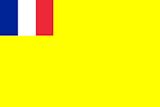
Bangkok Times: "An old topic" unter Verweis auf
Cucherousset, Henri <1879 - 1934>: Siam. -- In: L'Eveil économique de l' Indochine. -- Numéro special. -- Hanoi, [1923] -- 100 S. : Ill.
Abb.: Titelblatt
"The rather far-fetched suggestion is made that Siam would be justified in contemplating the possibility of France one day according absolute independence to her peoples of Indochina. There might then develop in Cambodia, Laos, or Annam such a state of disorder as would justify some precautions on the part of the disturbed country’s neighbours." [Zitiert in: Batson, Benjamin Arthur <1942 - >: The end of the absolute monarchy in Siam. -- Singapore : Oxford Univ. Pr., 1984. -- 349 S. : Ill. ; 22 cm. -- (Southeast Asia publications series ; no. 10). -- ISBN 0-19-582612-4. -- S. 46, Anm. 44]
1926-03-08
Karikatur über Frauen beim Glücksspiel, in der Zeitschrift Satri thai (ศตรีไทย):
Abb.: Frauen beim Glücksspiel, sie erzählen sich, dass ihre Gatten ausgegangen sind. - Polizist: "Aha! Ich hab's mir gedacht."
[Bildquelle: Barmé (2002), S. 128]
1926-03-24

Feierliche Kremation von Rama VI. (gestorben 1925-11-26)
Abb.: Phra Meru (พระเมรุ) für die Kremation Ramas VI., 1926

Bei den Verbrennungsfeierlichkeiten wird auch ein Deutschland-feindliches Buch Ramas VI. an die Mitglieder des Königshauses und des diplomatischen Corps verteilt.
"Dieses Buch wurde vom König Vajiravudh im August 1916 für das Tiger-Corps verfasst. Eigentlich sollte das Buch dem siamesischen Volk als Vorbereitung für den Eintritt in den Krieg dienen und war deshalb ausschließlich vom Standpunkt der Alliierten geschrieben worden. In ihm befindet sich eine Photographie, auf der Engländer in einen deutschen Schützengraben eindringen, während die deutschen Soldaten die Hände erheben, um sich zu ergeben. Es befindet sich in diesem Buch ebenfalls eine Fliegeraufnahme eines deutschen Gasangriffs in Russland mit der Bemerkung, dass die Verwendung von Gas die schlimmste Waffe sei und die Deutschen sie zuerst angewandt hätten. Auch ist eine französische Schützengrabenzeitung „Le Canard Poilu", die sich selbst als anti-boche bezeichnet, vom 15. Januar 1916 in diesem Buch abgedruckt. ln der Zeitung sind die deutschen Soldaten als „boche" bezeichnet, außerdem zeigt die Zeitung eine Reihe von Bildern, die die deutschen Soldaten und ihren letzten Kaiser verhöhnen. Unter dem Abdruck hat der verstorbene König Vajiravudh das Wort „boche" als ein Schimpfwort gegen die deutschen Soldaten erklärt. Das problematische Buch beinhaltet außerdem die Wiedergabe einer Karikatur, wo der deutsche Kaiser am Meeresstrande steht und mit einem Stock in den Sand „Deutschland, Deutschland über alles" hineinzeichnet, und die Wellen kommen und die Inschrift fortspülen." [Quelle: Catthiyakorn Sasitharamas [คัททิยากร ศศิธรามาส]: Die deutsch-thailändischen Beziehungen in der Zeit der Weimarer Republik bis zum Ende des Zweiten Weltkriegs. -- Hamburg : Kovač, 2012. -- 346 S. ; 21 cm. -- (Schriftenreihe Schriften zur Geschichtsforschung des 20. Jahrhunderts ; Bd. 4). -- ISBN 978-3-8300-6361-2. -- Zugl.: Hamburg, Univ., Diss., 2012. -- S. 46f., Anm. 78]
1926-03-25

Bangkok Times über den verstorbenen Rama VI.:
"His late Majesty was not by any means an ordinary monarch, and his reign will present problems for the country’s historians to study and disentangle." [Zitiert in: Batson, Benjamin Arthur <1942 - >: The end of the absolute monarchy in Siam. -- Singapore : Oxford Univ. Pr., 1984. -- 349 S. : Ill. ; 22 cm. -- (Southeast Asia publications series ; no. 10). -- ISBN 0-19-582612-4. -- S. 14]
1926-03-29
Über Nang Yiam (นางเยียม), eine 22jährige Frau, die einen Inder, der sie vergewaltigen wollte, tötete. Sie gilt als Heldin und wurde vom Gericht freigesprochen, im Periodikum Satri thai (ศตรีไทย):
Abb.: Nang Yiam (นางเยียม)
[Bildquelle: Barmé (2002), S. 132]
1926

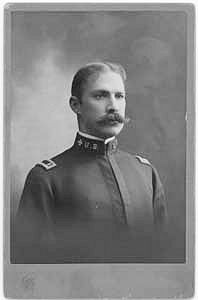
Abb.: Ira Ayer
[Bildquelle:
http://scholtz.org/Genealogy/getperson.php?personID=I447&tree=MyTree. --
Zugriff am 2014-04-15. -- Fair use]
Der US-Amerikaner Dr. med. Ira Ayer (1868 - 1939), Adviser of the Departement of Public Health über Infektionskrankheiten und Epidemien in Siam:
"The following monograph on infectious and epidemic diseases, written by Dr. Ira Ayer, the former Adviser of the Department of Public Health, in 1926, is here given with only a few additional remarks and slight modifications :— "The Department forwards epidemiological and pertinent information to the Health Organization of the League of Nations, of which Siam is a member, and exchanges similar information by telegraph and radio with the Eastern Bureau of the League at Singapore. The work of the Bureau at Singapore is regarded as of great value, not only intending to standardize returns so that they are more easily comparable and in distributing information of practical value, but in bringing the different administrations into closer touch with one another and fostering a spirit of co-operation which should be of far reaching effect.
"The notifiable epidemic diseases are
- plague,
- smallpox,
- cholera and
- epidemic cerebro-spinal meningitis.
Telegraphic reports of all cases of these diseases are required to be made to the Ministry of the Interior.
Abb.: Meningitis, Autopsiebefund
[Bildquelle: CDC / Wikipedia. -- Public domain]"Epidemic cerebro-spinal meningitis is not very prevalent and has been confined chiefly to prisons and barracks. It was first recorded in Bangkok in the report of the Medical Officer of Health for the year 1921.
Abb.: Xenopsylla chepsis (Orientalischer Rattenfloh), der primäre Übertrager der Pest
[Bildquelle: CDC / Wikimedia. -- Public domain]"The first case of plague appears to have been noted in Bangkok in 1904, about ten years after the beginning of the, present pandemic which, starting from the interior of China, has gradually involved in some degree nearly every country in the East. The disease established itself in Bangkok and quickly spread to certain localities in the interior. Though by no means as serious as in certain other eastern countries it has become one of the endemic diseases of Siam. No documentary records are available for the earliest occurrences but some examples from unofficial sources of information may be of interest. The inland town of Korat [โคราช
], which was affected soon after plague was reported in Bangkok, was subject to almost yearly outbreaks; in 1906 a whole section of the, town was burned in an attempt to eradicate the disease; in 1908 the number of daily cases is said to have reached a maximum of 35; in 1912, during a single dry season, over 800 people are said to have died. Departmental records for the interior provinces date from 1914. In the year 1917 during the course of a severe epidemic in which the population of this town of about 7,000 people was literally decimated, very thorough reconstructive work was carried out under the direct supervision of the Director of the Medical Department of the Ministry of the Interior; since then there have been only a few minor recurrences.
Abb.: Lage von Korat [โคราช]
[Bildquelle: OpenStreetMap. -- Creative Commons Lizenz (Namensnennung, share alike)]"An officer of the provincial gendarmerie, who was stationed at Korat [โคราช], tells of the following interesting experience. One day he met a procession carrying a bier upon which lay a figure dressed like a corpse for burial. People beating drums headed the procession and others carrying lamps and torches flanked it on either side; it was followed by a huge crowd of excited people. The procession passed around the city walls and finally entered a temple, where offerings were made and the bier was left, the people believing that the plague spirits had been tricked into entering the figure and, this then being on holy ground, they could not get out to resume their evil work in the town. This is of interest as showing the attitude of some of the people not so many years ago, but now very different.
"A number of other places were early affected and show a somewhat similar history to that of Korat. In 1906 at Nagor Pathom [Nakhon Pathom - นครปฐม] over 300 persons are said to have died in a population of less than 3,000. The writer has seen instances where whole households have died within a few days. The death of two or three in a family of five or six has frequently occurred. Villages of over two thousand people have been deserted until the epizootic had killed most of the infected rats and the people could safely return. It says something for public health that such occurrences are now becoming infrequent.
Abb.: Lage von Nakhon Pathom (นครปฐม)
[Bildquelle: OpenStreetMap. -- Creative Commons Lizenz (Namensnennung, share alike)]"In the earlier outbreaks buildings or whole sections of infected towns were not infrequently burned. More recently, a large amount of alteration and reconstruction of buildings has been undertaken and, wherever this has been done, definite results in diminution or cessation of plague have been attained." Loans of money were sometimes made to small property owners to expedite such improvements. " Unfortunately, in the absence of powers to enforce building regulations, insanitary conditions gradually recur.
"The health authorities have been able to concentrate upon the rat as the chief factor in plague because epidemic pneumonic plague is rare in Siam and bubonic plague is seldom "—if ever in this country—" directly spread by the sick individual. There is a seasonal tendency in plague, usually the months of January to March or April.
Abb.: Vibrio cholerae, der Choleraerreger, elektronenmikroskopische Aufnahme
[Bildquelle: Tom Kirn, Ron Taylor, Louisa Howard - Dartmouth Electron Microscope Facility / Wikimedia. -- Public domain]"Severe epidemics of cholera occurred long before departmental records were kept. The older residents will tell of regular processions of coffins in what is now the principal business street of Bangkok. These belong to a past generation, but still cholera is one of the most serious of the epidemic diseases with which the health authority has to deal.
"The first general cholera epidemic of which official records are available, began in February 1919 in a small town on the upper course of the River Ping [แม่น้ำปิง] near the Burmese frontier. Notwithstanding all that could be done the disease spread rapidly and during the next two years there occurred over 18,000 cases and 13.000 deaths. Although sporadic cholera is reported every year from different localities, there is a tendency to a periodicity of about six years in these extensive outbreaks.
Abb.: River Ping [แม่น้ำปิง]
[Bildquelle: Kmusser / Wikimedia. -- Creative Commons Lizenz (Namensnennung, share alike)]"An epidemic began in Bangkok in October 1925 and again extended rapidly. By the end of September 1925, over 10.000 cases and 7.000 deaths had been reported in the interior provinces, and 3,000 cases and 1,800 deaths in Bangkok. Very active educational propaganda was carried on, posters were placed prominently throughout the city and in the provinces, information concerning precautions to be taken was disseminated by means of public lectures and in the cinema halls, many thousand leaflets were distributed. The effect of this propaganda was visible in the actions of a considerable number of the population.
"During a period of two months at the height of the epidemic and before the onset of the rains, the Department of Public Health distributed over 1,000,000 gallons of water at the rate of about 17,500 gallons per day to communities in the vicinity of Bangkok, which had not access to the city water supply. Medicine was freely distributed and 237,206 anti-cholera inoculations were performed.
"The Siamese Red Cross Society greatly assisted in this emergency by making the strenuous effort needed to prepare at the Queen Saovabha Memorial Institute [สถานเสาวภา] the exceptional quantity of vaccines required, and further showed its desire to be of the highest service by supplying these to the health authorities free of charge during the whole period of the epidemic.
"The Navy also gave valuable assistance by converting the naval hospital at Bangkok into an emergency cholera hospital, furnishing the full staff, equipment and medical supplies.
"One of the Royal Princes generously lent his former palace to the Department of Public Health for use as an emergency cholera hospital. By reason of location and arrangement this became the best emergency hospital established by the Department. Private firms and citizens also gave material assistance by lending motor cars and a large water boat to the Department.
"It is of interest to note that in these epidemics the disease has tended to be more serious and persistent in the great central valley and along the course of the larger rivers, and relatively much less severe in certain Circles where the people depend for their domestic water supplies upon deep wells. In both the last and preceding epidemics Bangkok had the advantage of the present water system which undoubtedly did much to lessen the severity of the disease in the city.
"Since then two smaller outbreaks of cholera have taken place, the only noteworthy feature of these being the extensive use of anti-cholera vaccination which had become popular in most parts of the infected area and which undoubtedly checked their virulence even before the occurrence of heavy rainfall which has been often observed to have a very marked effect upon this disease.
Abb.: Pocken
[Bildquelle: George Henry Fox 1886 / Wikipedia. -- Public domain]"Smallpox is a definitely preventable disease but only at the price of continued watchfulness. Several years ago smallpox broke out in a small isolated southern fishing community. For various reasons, the outbreak got out of hand before the Ministry was informed of the true conditions and the disease spread to other places on the coast. The central health department then took charge and the epidemic was promptly checked, hut the conditions in the localities first affected were evidence that, left to itself, smallpox could still disorganize the life of communities in this country. Their activities were practically suspended, people marked by the disease were seen everywhere and, though the epidemic was beginning to burn itself out, persons in the active stages of the disease were widely scattered in the villages. In the face of this disaster there was a pitiful feeling of helplessness among these people until they appreciated the assistance which the health authorities were able to give them.
"On the whole the Government may properly feel some gratification regarding this disease as not only is the population becoming fairly well protected by continued vaccination but by intensive vaccination in the event of an outbreak a number of threatening epidemics have been brought under control.
"The ‘conscientious objector’ is fortunately not prevalent in this country.
[...]
Abb.: Grippe-Symptome
[Bildquelle: CDC / Wikipedia. -- Public domain]"Siam did not escape the great pandemic of influenza. It appeared in Bangkok in the month of October 1919 and spread from point to point over the whole country. The type was somewhat less severe than in many other places but over 80,000 deaths were reported as due to influenza during the six months of prevalence, in many places business was at a stand-still and even the government offices were closed.
Abb.: Lebenszyklus der Plasmodien
[Bildquelle: Wikipedia. -- Public domain]"Year in and year out malaria justifies its characterization by Osler [Sir William Osler, 1st Baronet, 1849 - 1919] as the greatest single destroyer of the human race. When one has once seen a fever stricken village with more than half the population sick, with perhaps a death in nearly every household, it makes an impression not easily forgotten. Between 40,000 and 50,000 deaths from malaria have been reported in a single year. The question of dealing with malaria is of course constantly before the health authorities ; quinine is distributed in increasing quantity but, owing to its extent and complexity, the malarial problem of Siam is yet far from practical solution." It is a worthy matter of note that the Speech from the Throne, already referred to, made special comments upon this serious national problem, and indications are not wanting that immediate steps will be taken to study the specific local factors.
Abb.: Lebenszyklus von Entamoeba histolytica
[Bildquelle: CDC. -- Public domain]"Dysentery is prevalent throughout the country. The amoebic form [
Amöbenruhr] is a frequent cause of disability among foreigners, and it is likely that eating uncooked salads and garnished foods is one of the chief causes of this. During the epidemic of cholera such foods were not served in any of the hotels of the Royal State Railways, an example which is believed to be worthy of imitation.
Abb.: Lebenszyklus des Hakenwurms (Ancylostoma duodenale)
[Bildquelle: CDC. -- Public domain]" Hookworm and intestinal parasites are prevalent and widely spread. Owing to the activities of the Sanitary Campaign data concerning these diseases are more complete than for any others except the four notifiable epidemic diseases. Of variable intensity in different parts of the country, they are generally a good index of sanitary conditions and because of the facility with which they can be demonstrated and cured are largely utilized in connection with educational propaganda for improvement of the public health.
Abb.: Positiver Befund von Darmparasiten in 722.000 Stuhlproben 1917 - 1923-03-31 (in Prozent, mehrere Befunde im gleichen Stuhl sind möglich)
[Datenquelle: Siam : general and medical features / by the Executive Committee of the 8th Congress of Far Eastern Association of Tropical Medicine. -- Bangkok : Bangkok Times, 1930. -- S. 217]Pneumonia as well as some of the characteristic tropical diseases also require consideration.
Other diseases are, " however] " notable for their absence or comparative rarity. Among these may be mentioned
- typhus fever,
- the relapsing fevers,
- certain diseases caused by flukes such as schistosomiasis,
- kala azar,
- human trypanosomiasis (African sleeping sickness),
- Malta fever [Brucellosis],
- pellagra,
- diphtheria,
- scarlet fever
- and others.
Yellow fever has fortunately never been brought into the Far East. Apparently one has to thank distance for this and there has been some apprehension on the part of eastern health authorities that with greatly increased facilities of communication the disease might be introduced. The extent of such a disaster in eastern conditions and a virgin field can only be guessed. But the Rockefeller Foundation, in its successful attempt to control yellow fever in its American strongholds and its undertaking to do a similar service for the west coast of Africa is performing a world service which will probably prevent such possibilities from becoming realities."
[Quelle: Siam : general and medical features / by the Executive Committee of the 8th Congress of Far Eastern Association of Tropical Medicine. -- Bangkok : Bangkok Times, 1930. -- S. 218 - 222, 224f.]
ausführlich: http://www.payer.de/thailandchronik/ressourcen.htm
Phongpaichit, Pasuk <ผาสุก พงษ์ไพจิตร, 1946 - > ; Baker, Chris <1948 - >: Thailand : economy and politics. -- Selangor : Oxford Univ. Pr., 1995. -- 449 S. ; 23 cm. -- ISBN 983-56-0024-4. -- Beste Geschichte des modernen Thailand.
Ingram, James C.: Economic change in Thailand 1850 - 1870. -- Stanford : Stanford Univ. Pr., 1971. -- 352 S. ; 23 cm. -- "A new edition of Economic change in Thailand since 1850 with two new chapters on developments since 1950". -- Grundlegend.
Akira, Suehiro [末廣昭] <1951 - >: Capital accumulation in Thailand 1855 - 1985. -- Tokyo : Centre for East Asian Cultural Studies, ©1989. -- 427 S. ; 23 cm. -- ISBN 4896561058. -- Grundlegend.
Skinner, William <1925 - 2008>: Chinese society in Thailand : an analytical history. -- Ithaca, NY : Cornell Univ. Press, 1957. -- 459 S. ; 24 cm. -- Grundlegend.
Mitchell, B. R. (Brian R.): International historical statistics : Africa and Asia. -- London : Macmillan, 1982. -- 761 S. ; 28 cm. -- ISBN 0-333-3163-0
Credner, Wilhelm <1892 - 1948>: Siam das Land der Tai : eine Landeskunde auf Grund eigner Reisen und Forschungen. -- Stuttgart : Engelhorn, 1935. -- 423 S. : Ill.
Landon, Kenneth Perry <1903 - 1993>: Siam in transition : a brief survey of cultural trends in the five years since the revolution of 1932. -- Chicago : Univ. of Chicago Press, 1939. -- 328 S. ; 24 cm.
Barmé, Scot: Woman, man, Bangkok : love, sex, and popular culture in Thailand. -- Lanham : Rowman & Littlefield, 2002. -- 273 S. : Ill. ; 24 cm. -- ISBN 0-7425-0157-4
Zu Chronik B. E. 2469 / 1926-04 - 1927-03